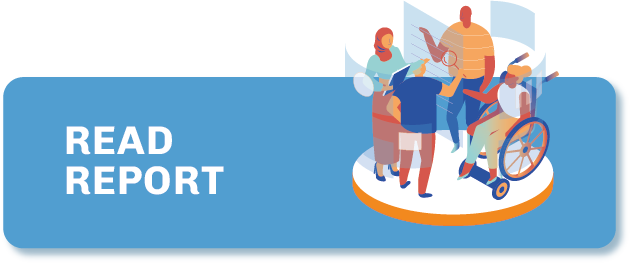Finland
In Finland, smartphones have surpassed computers as the main device for accessing online news. Ethnic minorities are underrepresented in the Finnish media sector, according to Reporters Without Borders’ Press Freedom Index. A notable ongoing project is the development of a national digital login service for media outlets, which would simplify readers’ experience in paying for news and simplify targeted advertising, removing some of the power from giant social media platforms.
GENERAL INFORMATION
Press
freedom
ranking
Internet
penetration
POPULATION
Media organisations
in the Directory
TYPE OF COVERAGE

TYPE OF ORGANISATION

GENDER OF FOUNDERS

Press freedom
As described by Reporters Without Borders, Finland is one of the few countries in the world “where the media is truly free”. Current laws protecting freedom of speech and media freedom are in Finland’s constitution and the European Convention on Human Rights. The independent Council For Mass Media (CMM) has provided ethical guidelines for journalists, which act as a basis for the industry’s self-regulation on good journalistic practice. The vast majority of Finnish media outlets are affiliated with CMM. However, Reporters Without Borders identifies online harassment and legal intimidation as issues affecting Finnish journalists.
Market structure and dominance
Finland’s media is mostly independent from political affiliations. Public broadcaster Yle (Finnish Broadcasting Company) is majority-owned by the state but this does not influence the reporting or appointments of journalists (Source: Yle). Media ownership is concentrated in a few big companies (Sanoma, public broadcaster Yle, Alma media, MTV and Keskisuomalainen among the biggest).
Finland’s most-read online newspaper is an evening newspaper, Iltalehti, published by Alma Media, which reaches around 2.86 million readers each week. Helsingin Sanomat and Aamulehti are the most read printed daily newspapers, with around 601,000 and 173,000 readers, respectively (Source: Iltalehti). Yle is trusted by over 83% of the Finnish audience. While TV news is the broadcaster’s main platform, its online content is increasingly consumed by younger audiences. (Source: Yle)
Journalistic content is available in Finnish, Swedish and Sámi, and some minority languages. Finland is officially bilingual, and additionally Sámi languages are among the officially recognised languages in their native region.
How media is funded
Yle is funded through taxes. For other news media outlets, subscribers and media sales are important sources of revenue. In 2021, consumer sales accounted for 62% and media sales for 38% of trade association News Media Finland’s members’ net sales. A relatively high number of subscribers (19%) pays for online news, notes the Reuters Institute for the Study of Journalism in its Digital News Report 2022. The report also found that Finnish media outlets are increasingly pursuing subscriptions as a source of revenue, with organisations introducing paywalls.
A law restricting the online content published by Yle was introduced in 2022. The law requires all Yle online content to include audiovisual elements (with some exceptions). The law was introduced following a complaint that Yle’s written online news coverage was in breach of European Union state aid legislation, and disadvantaged independent news outlets.
Five profiles of digital native media organisations from Finland are included in the directory. Digital native media outlets in Finland serve a range of niche audiences, from special interests like gaming and metal music, to various platforms reporting on arts, culture and society. A number of media platforms operate on the basis of “for us, by us”, working for underserved audiences with minority identities. These outlets tend to have clear submission guides to encourage new voices in journalism.
While most outlets focus on reporting for local readers, viewers and listeners, content written in multiple languages creates platforms that reach other Nordic, European and global audiences.
Digital media outlets are also using the possibilities of online storytelling to break away from traditional formats, by providing longform digital essays and reports, using social media as their main platforms.
Digital native mediamakers in Finland often operate on grant funding, but there are other innovative approaches to ensure the sustainability of their businesses. Companies interviewed as part of Project Oasis’ research have found ways to generate revenue through collaborations with other businesses in various ways that retain their editorial independence. Digital native outlets have also successfully pitched their skills to produce projects in collaboration with more established media companies.
Finland’s digital native media landscape is a diverse mix of established outlets and smaller operations. While core teams are small, there is often an aim to feature new talent – and pay them for their work. There have been clear efforts to address the lack of visibility of minority voices in the mainstream media. Most mediamakers use websites as their main platform, but some social media-first outlets are also emerging. Arts, culture and literature in different forms are the focus of a number of digital media outlets, which indicates a demand for more journalistic coverage in those areas.
Last updated: January 2023
CREDIT FOR STATISTICS: Press Freedom statistics, RSF Press Freedom Index 2022; Internet penetration and population statistics, from Internet World Stats

